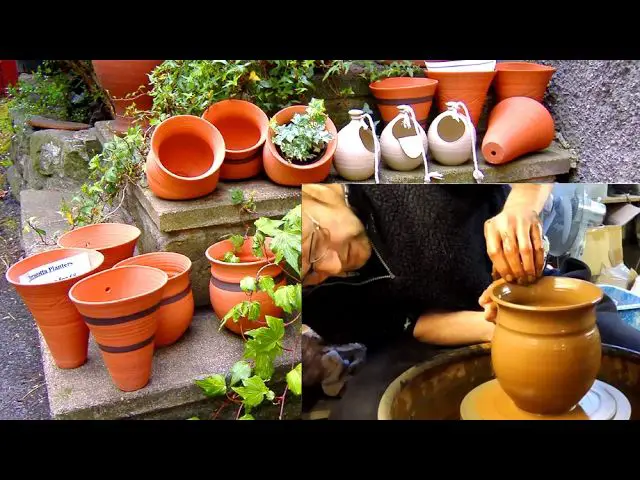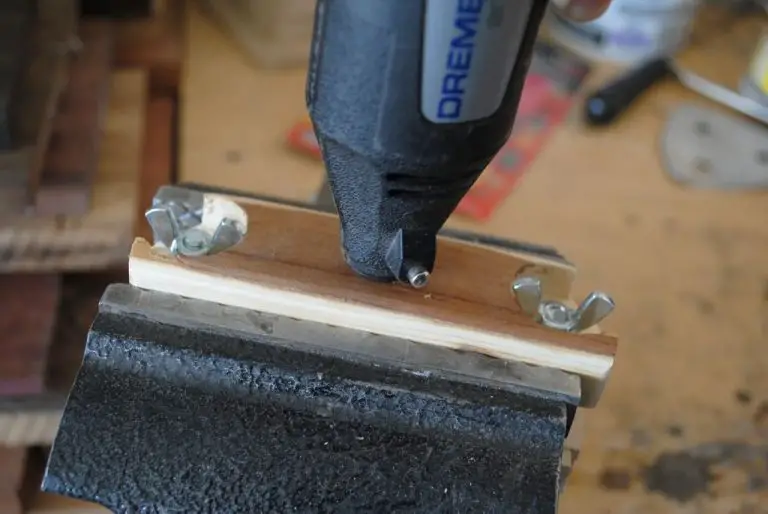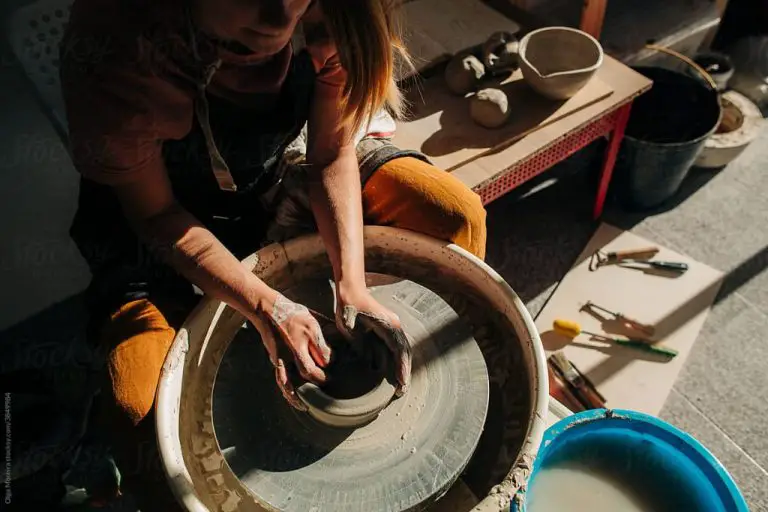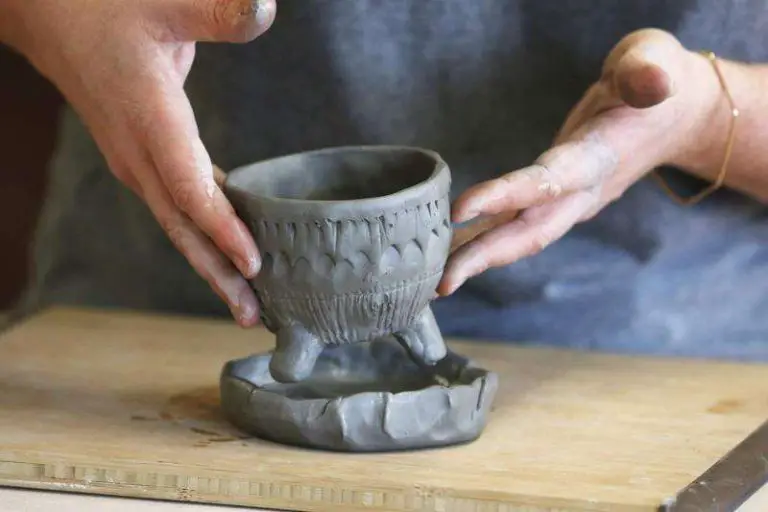What Is A Pot Made Of Clay Called?
Introducing Clay Pots
A clay pot is a container made from clay that has been shaped while wet and then fired in a kiln to harden it. Clay pots are a type of ceramic, which refers to objects made from clay that undergo high heat treatment to achieve hardness and durability.
The term “ceramic” comes from the Greek word keramos, meaning “potter’s clay” or “pottery”. Ceramics include a wide range of materials including earthenware, stoneware and porcelain. Clay pots specifically refer to earthenware or terracotta pottery made from clay.
Clay pots have been used for cooking, storage, and transport across many ancient civilizations for thousands of years. Their versatile uses and aesthetic qualities continue to make them popular today.
History
The invention of clay pots dates back over 12,000 years ago to the Jomon period in Japan, one of the oldest known pottery making cultures. Early clay pots and vessels were hand molded by coiling rings of clay to form the shape of the pot, then the clay was fired in an open fire to harden it.
Some of the oldest known clay pots have been found in China and Japan and date back to 18,000-15,000 BC. In China, primitive clay pots were being made at the Hemudu culture site by about 7000 BC. Early Jomon vessels from Japan (10,500–300 BC) are some of the oldest known pottery in the world.
In the Middle East, clay pottery was in use by 6000 BC and had spread to the Mediterranean coast and Mesopotamia by about 5000 BC. The ancient Egyptians began using pottery vessels for storing water, wine, oil as early as 5000 BC. Throughout ancient history, clay pots were an important technology for storing and transporting goods, and were used for cooking food as well.
Sources: https://ourpastimes.com/history-of-clay-pots-12363623.html, https://medium.com/@bs.rumita/making-delightful-food-in-clay-pots-725d64530197
Clay Composition
There are several types of clay commonly used in pottery, each with their own unique properties and characteristics. Some of the main types include:
- Earthenware – This clay contains iron and other minerals, giving it a porous, absorbent quality after firing. Earthenware clays require lower firing temperatures than other clays, making them popular for hand-built pottery. Examples include red and brown clays. (https://artabys.com/unearthing-the-different-varieties-of-clay-a-comprehensive-guide/)
- Stoneware – Denser and less porous than earthenware, stoneware clays can withstand higher firing temperatures. The clays vitrify during firing to become watertight. Stoneware tends to have earthy gray, brown, or reddish tones. (https://www.bluedogceramics.com/pottery-lessons/blog-post-02)
- Porcelain – The most refined clay body, porcelain is white, translucent and very strong after high-temperature firing. The high kaolin content gives porcelain its fine texture and resistance to moisture absorption. Porcelain clays must be fired between 2,200-2,550°F to achieve full vitrification.
- Ball clays – Added to stoneware and porcelain blends, these tertiary clays help improve workability and plasticity. Ball clays also contribute to vitrification and increase a clay body’s strength.
Potters often mix different clay types together to achieve the desired characteristics in the finished piece. The type of clay determines the final look, texture, color, and durability of the ceramic work.
Shaping Methods
Clay pots can be shaped using a variety of techniques that take advantage of the malleable properties of clay. Two of the most common shaping methods are wheel throwing and hand building.
Wheel Throwing
Wheel throwing involves sitting at a potter’s wheel and using centrifugal force to shape the clay. The clay is centered on the wheel and then the potter uses their hands to open up the lump of clay and form it into a hollow shape as the wheel spins at a constant speed. This takes skill to perfect but allows potters to create uniform rounded shapes quickly.
Hand Building
Hand building does not utilize the potter’s wheel. Instead, the clay is shaped entirely by hand using techniques like pinching, coiling, and slab building. For pinching, the clay is shaped by squeezing it between the fingers and thumb. Coil building involves rolling out “snakes” of clay into long coils then stacking the coils on top of each other to build up the walls of the pot. Slab building uses flat slabs of rolled out clay that are joined together to form the pot shape. Hand building allows for more unique and intricate shapes that can be difficult to throw on the wheel.
Decorating
There are many creative ways to decorate clay pots. Two of the most popular methods are glazing and painting. Glazes are mixtures of minerals and chemicals that produce a glassy coating when fired in a kiln. Glazes come in a wide variety of colors and finishes like glossy, matte, or crackled. They can be applied using techniques like dipping, pouring, or spraying. According to Mod Podge Rocks, acrylic and spray paints also work well on terra cotta pots. Paints allow for more freeform designs. Pots can be decorated with patterns, images, words, or textures using paintbrushes, sponges, stamps, stencils, and more. Glitter, sequins, beads, buttons, and other embellishments can be added on top of paint for extra dimension.
Textures like rustic crackle finishes can be achieved by painting pots with a glue and sand mixture. Terra cotta pots can also be wrapped with natural materials like jute, twine, burlap, or raffia for an organic look. Stamped patterns are possible using items with interesting shapes and textures like leaves, seashells, doilies, or even vegetables and fruits dipped in paint. The options for decorating clay pots are endless!
Firing Process
Clay pots must go through a firing process in order to harden and become durable. There are several methods used to fire clay pots:
Kiln Firing
Kiln firing involves placing clay pots into a kiln, which is an oven designed for firing pottery, ceramics, and sculpures made from clay. The pieces are fired at high temperatures, often between 1600-2300°F. Kiln firing results in durable, hardened pottery.
Pit Firing
Pit firing involves placing pots in a pit dug into the ground and building a fire in the pit to heat the pots. Various materials like sawdust, leaves, or charcoal may be used for fuel. Pit firing often results in uneven heating and smoky effects on the clay. source
Raku Firing
Raku firing involves removing red-hot pots from the kiln and placing them into containers with combustible materials like sawdust or newspaper. This produces dramatic effects by restricting oxygen and causing the materials to smoke. Raku firing creates unique, unpredictable finishes.
Types of Clay Pots
There are many different types of clay pots that have been created across cultures for various uses. Some of the most common types include:

Amphora
Amphorae (the plural of amphora) were two-handled ancient Greek jars primarily used to transport wine, oil, olives, and grain (Source). They had a narrow neck and pointed base, and were often decorated with figures related to their contents. Amphorae were a standard unit of measurement in ancient times.
Bulb Pot
Bulb pots, also known as bulb pans, are shallow, bowl-shaped pots used for growing bulbs like tulips, daffodils, and hyacinths. They allow excess water to drain away while keeping the bulbs nourished (Source). Bulb pots often have holes in the base for drainage.
Ginger Jar
Ginger jars originated in China and get their name from once being used to store and ship ginger. They are rounded jars with a bulging belly, small mouth opening, and often a decorative lid. Today ginger jars are frequently used as vases (Source).
Uses
Clay pots have been used for a variety of purposes throughout history. Some of the most common uses include for cooking, storing, and decoration.
Clay pots excel at even heat distribution and moisture retention, making them ideal for cooking a variety of foods. Many cultures around the world have used clay pots to cook stews, grains, beans, and more. The porous material allows steam to escape while retaining heat and moisture. Clay pots can help food cook more evenly and retain more nutrients compared to metal pots.
Clay’s natural cooling properties also make these vessels ideal for storing water and perishable foods like dairy and vegetables. The evaporation through the porous clay walls kept contents cooler than storage in metal or glass containers. Storing in unglazed clay pots allows some of the liquid to seep out, keeping the remaining contents fresh. These cooling properties were very useful in hot climates before the invention of refrigeration.
In addition to practical uses, clay pots have long been decorated and used for aesthetic purposes. Elaborately painted or glazed pots and vases have been created worldwide as art, home decor, ceremonial pieces, and more. The durable nature and ability to imprint designs makes clay an ideal medium for decorative works.
Regional Styles
Clay pots have historically been crafted with distinct regional styles around the world. Some of the most notable regional styles include those from ancient Greece, China, and among Native American tribes.
Ancient Greek pottery, known as Greek vase painting, dates back to the Minoan pottery of the Bronze Age. Popular Greek pottery styles included the geometric, black-figure, and red-figure techniques. Greek pots were often painted with intricate figurative scenes depicting myths and daily life. Famous examples include the amphorae used for storing wine and olive oil.
Chinese pottery traditions date back 20,000 years to the neolithic period. Distinct styles emerged during different dynastic periods and regions, including the Tang sancai pots of the Tang Dynasty and the celadon wares of the Song Dynasty. Chinese pots were often glazed and painted with symbolic designs. Porcelain became a renowned Chinese craft starting in the Tang Dynasty.
Native American pottery was traditionally made by women for utilitarian as well as ceremonial purposes. Different tribes had their own styles, including the black pots of the Hopi and Santa Clara people and the paddle-and-anvil technique of the Chumash tribe. Pueblo tribes like Taos are known for their black-on-black painted pots.
These diverse regional pottery styles demonstrate the widespread artistry and ingenuity used to craft clay pots across cultures. The traditional methods and designs reveal insights about each culture’s values, lifestyles, and artistic expression.
Source: https://en.wikipedia.org/wiki/Pottery
Conclusion
In conclusion, clay pots have played an important role throughout history and across many cultures. They are made from natural clay that can be shaped and decorated in endless ways. While clay pots were once essential for tasks like carrying water and cooking food, today they remain popular for their beauty, durability and eco-friendly nature. Clay pots provide a way to stay connected to ancient traditions while also being highly useful in a modern home. Their porous nature helps regulate moisture and temperature which makes them ideal for plants. Terracotta pots in particular have remained popular for outdoor use and indoor decor. Although styles and methods have evolved over time, clay pots continue to be appreciated for their rustic, natural charm.
While metal and plastic have replaced clay for many practical uses, traditional clay pots maintain their significance. As useful and decorative objects, they reflect humanity’s ingenious use of natural materials to meet fundamental needs. Simple clay pots link us to the very origins of civilization.





